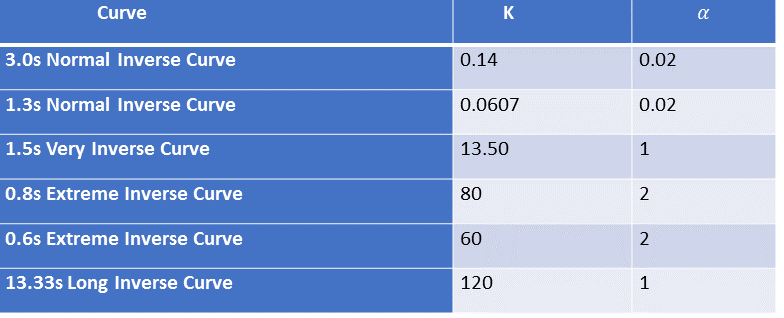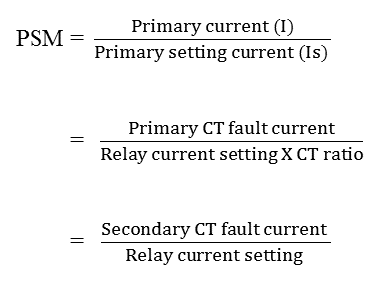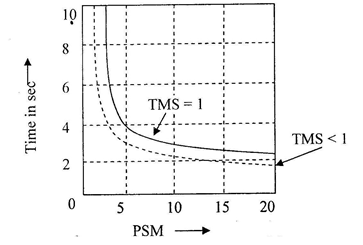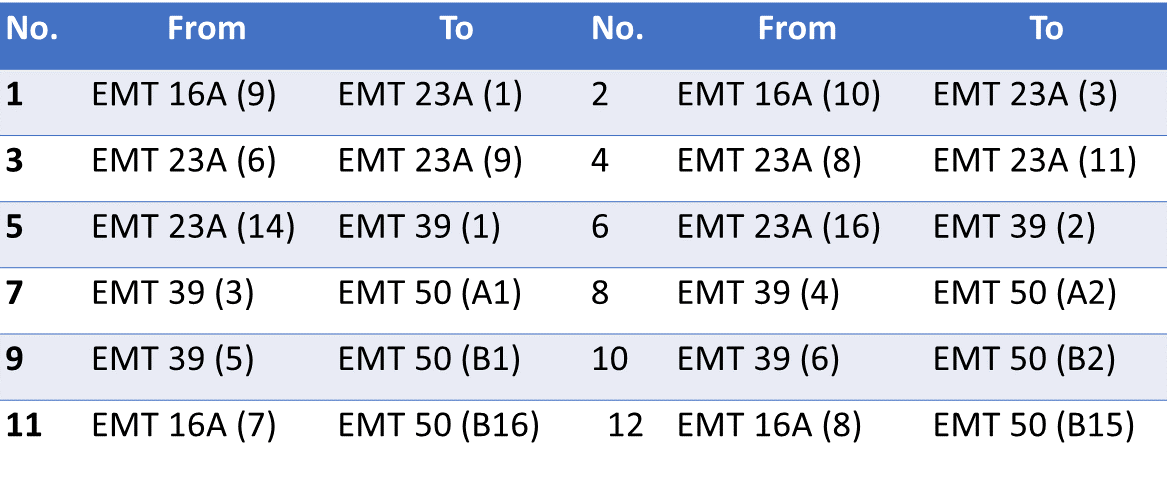Theory
Inverse Definite Minimum Time (I.D.M.T) Characteristics:
When a protection element is programmed as an inverse time over current (OC) element, the trip relay operates if, the input signal exceeds the set threshold OC setting by 1.2 (typical) times.
The operating time of the trip relay is a function of the relative value of the relay current with reference to the set threshold current value; the variation in curve is brought about by constants K and a.
There are six inverse time operating characteristics
- 1. 3.0s Normal Inverse Curve
- 2. 1.3s Normal Inverse Curve
- 3. 1.5s Very Inverse Curve
- 4. 0.8s Extreme Inverse Curve
- 5. 0.6s Extreme Inverse Curve
- 6. 13.3s Long Inverse Curve
For timing calculations, we use the following equation,
Where,
I = Fault current
Is = Fault current level set in the relay
T = Operating time in secs.
Tp = Time Multiplier Setting (TMS)
K and a = Curve constants
Table 1: Curve constant
Current Setting:
The current above which an over current operate can be set.
Suppose that a relay is set at 5A. It will then operate if the current exceeds 5A. Below 5A, the relay will not operate.
In this numerical type of relay, there is phase OC (IDMT) setting from 2% to 250% in step of 2% i.e., for 5A relay setting PH>(IDMT) setting will be 0.1A to 12.5A using keyboard setting.
An over current relay which is used for phase to phase fault protection, can be set at 2% to 250% of the rated current in steps of 2%.
The usual current rating of this relay is programmable as 1A or 5A.
If the time-current curves are drawn, taking current in amperes on the X-axis, there will be one graph for each setting of the relay.
To avoid this complex situation, the plug setting multipliers (PSM) are taken on X-axis. The actual r.m.s. current flowing in the relay expressed as a multiple of the setting current (pick up current) is known as the plug setting multiplier (PSM).
Suppose, the rating of a relay is 5A and it is set at 200%, i.e. at 10A. If the current flowing through relay (secondary fault current) is 100A, then the plug setting multiplier will be 10. Against each multiplier, the manufacturer specifies trip time.
In this case for PSM 10, relay shall trip @3sec which we can verify by experiment. The PSM can be expressed as
Trip Time Setting:
The operating time of the relay can be set at a desired value.
In this relay TMSvalues can be set from 0.02 to 1.0 in step of 0.01 by using front keyboard.
IDMT Curve:
While plotting the time current characteristics, if PSM is plotted on the X-axis, there will be one curve for each trip time setting (TMS) of the relay.
The curves are generally plotted as shown below. From ratio of secondary fault current to relay current setting, we get PSM, then follow particular curve for set TMS to get trip time in seconds on Y-axis.
Figure 1: IDMT curve
From the figure the operating / trip time, when plug (current) setting multiplier is 10 and the time multiplier is set to 1, is 3 seconds






